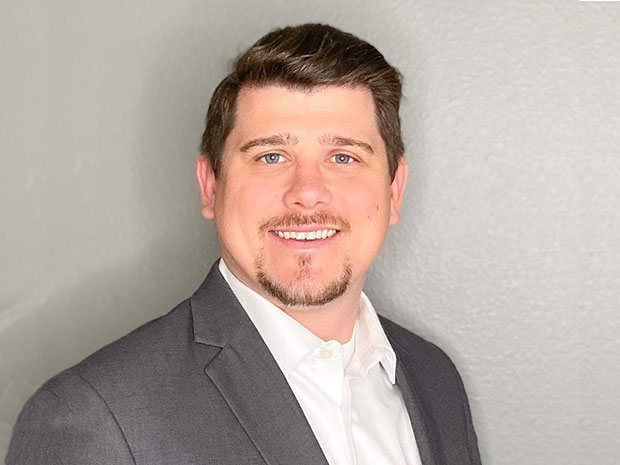Key takeaways
Operational focus and risk controls fuel growth, resilience and exit-readiness.
Early focus on talent, technology and governance unlocks full exit value.
Private equity (PE) firms are increasingly holding portfolio companies for five or more years, according to the PitchBook 2024 US Annual PE Breakdown, which gives potential buyers more time to scrutinize operational weaknesses, potentially lowering enterprise value. This trend calls for a proactive approach to professionalizing operations from acquisition onward, facilitating a cohesive, integrated portfolio rather than a fragmented collection of assets.
By focusing on operational excellence and prioritizing risk management across human capital, operations and technology, PE leaders can drive profitable growth, resilience and exit-readiness. It requires an end-game mindset from the moment an acquisition is targeted. Leaders should start by asking: “Will this business run like a cohesive, integrated company or will it crumble under buyer scrutiny?”
Operational gaps that can undermine sustainable growth
Many PE acquisitions begin with companies in operational disarray. Foundational capabilities, particularly in human capital and technology, are often underemphasized early in the hold period, limiting long-term value creation. Recognizing common pitfalls and their operational characteristics is an important step toward creating a cohesive portfolio.
Common pitfalls and operational characteristics
Hiring strategy misalignment
Talent is added without clear alignment to strategic goals, causing inefficiencies and missed opportunities.
Performance tracking gaps
Key performance indicators and financial metrics often diverge from the deal thesis due to poorly integrated assets.
Disconnected technology roadmaps
Early technology risks such as disparate data systems, poor reporting and the absence of a clear and well-defined strategy (e.g., technology, AI, data) are neglected.
Addressing these gaps early is critical for unlocking full value at exit, with a focus on human capital, technology (including AI) and governance.
Human capital: Leadership alignment fuels execution
A successful value creation plan requires leadership that is strategic rather than merely functional. Therefore, a priority in professionalizing operations is conducting leadership assessments, ideally before the deal closes. Key steps include:
- Conducting leadership assessments before deal closure to evaluate strategic fit. For instance, is the chief financial officer more of a controller focused on transactional elements of the business or a strategic planner of investments and cost take-out? Is the chief information officer equipped to guide a digital transformation or a complex integration?
- Aligning roles, decision rights and accountability clearly, supported by incentive structures tied to value creation milestones.
- Modernizing HR infrastructure by investing in unified platforms for payroll, employee data and performance tracking across acquired entities to help close operational gaps, such as inconsistent processes, fragmented reporting or compliance exposure.
Technology: From cost center to value driver
Technology should be viewed as a growth enabler and cost optimizer, especially during longer holds. PE leaders should:
- Catalog pain points through interviews with department heads to identify high-impact technology investments
- Encourage executive-level engagement and cross-functional representation in planning strategic deployments of technology investments
- Streamline the integration of acquired companies using consolidation tools, data warehouses and technology M&A playbooks
- Increase visibility by consolidating reporting across disparate enterprise resource planning solutions, enabling real-time insights into financials and operations
- Support growth functions such as sales, customer support and supply chain with integrated systems to scale effectively
- Drive efficiency with AI by automating routine tasks to free up staff for higher-value work; examples include implementing customer service chatbots to answer frequently asked questions or leveraging predictive analytics for demand forecasting

RSM case study: Automating claims appeals to drive efficiency and revenue recovery
Hospitals across the country are facing a sharp rise in claim denials from payors, straining already limited resources. In many cases, highly trained nurses are being pulled from patient care to draft appeals letters, and even then, many denials go unchallenged due to lack of capacity, resulting in significant revenue write-offs.
A large health care provider addressed this challenge through practical automation. By training an AI model to generate letters of appeal, the organization was able to significantly reduce its reliance on manual processing. This allowed a large percentage of the nursing staff previously dedicated to this task to be reallocated to more strategic initiatives.
The automation solution not only improved efficiency but also unlocked measurable financial benefits. It helped increase revenue recovery, accelerate cash flow and reduce the overall volume of denials. For this provider, a one-time implementation project is expected to yield approximately $200,000 in monthly savings—or $2.4 million annually—while also reducing the need to dedicate valuable nursing resources to a revenue cycle task.
Governance: Focus and accountability across the lifecycle
As portfolio complexity increases, so does the need for strong governance. Without structure, even well-capitalized companies will drift. One RSM portfolio client was running 75 supposedly strategic projects, many off-budget and behind schedule. With support, the executive team whittled that down to 20 priority efforts aligned with EBITDA and growth targets. PE leaders can similarly reduce initiative clutter through effective governance, which includes:
- Establishing strategic initiative management through program management offices or firm-level oversight to track execution, reduce the number of strategic projects, manage third-party performance and measure return on investment aligned to EBITDA and growth targets
- Using playbooks and frameworks to define integration plans, leadership onboarding and stage gates, which build repeatable excellence and reduce reactive management
- Aligning incentives with priorities by connecting performance goals to value drivers like EBITDA margin improvement or synergy capture
The takeaway
Professionalizing a portfolio company involves targeted steps to transform a collection of assets into a scalable, sellable business. This includes placing the right leadership, implementing a technology stack that supports scale and establishing governance that balances discipline with agility. Applying this strategy throughout the hold period fosters sustainable, credible growth that withstands buyer diligence and maximizes exit multiples.
PE leaders are encouraged to engage experienced advisors in bringing frameworks, benchmarks and objectivity to leadership evaluation, technology planning and governance execution, as these fundamentals often determine the difference between premium exits and price adjustments. In many cases, this also means considering how to augment internal teams with external support to close capability gaps and accelerate progress toward value-creation goals.
RSM contributors
-
 Oliver SnavelyPartner
Oliver SnavelyPartner -
 Craig CoffaroIT Due Diligence Leader
Craig CoffaroIT Due Diligence Leader -

Related insights
Private equity consulting that supports your journey to profitable growth
Tailored to deliver exceptional outcomes at both the fund and portfolio company levels.

